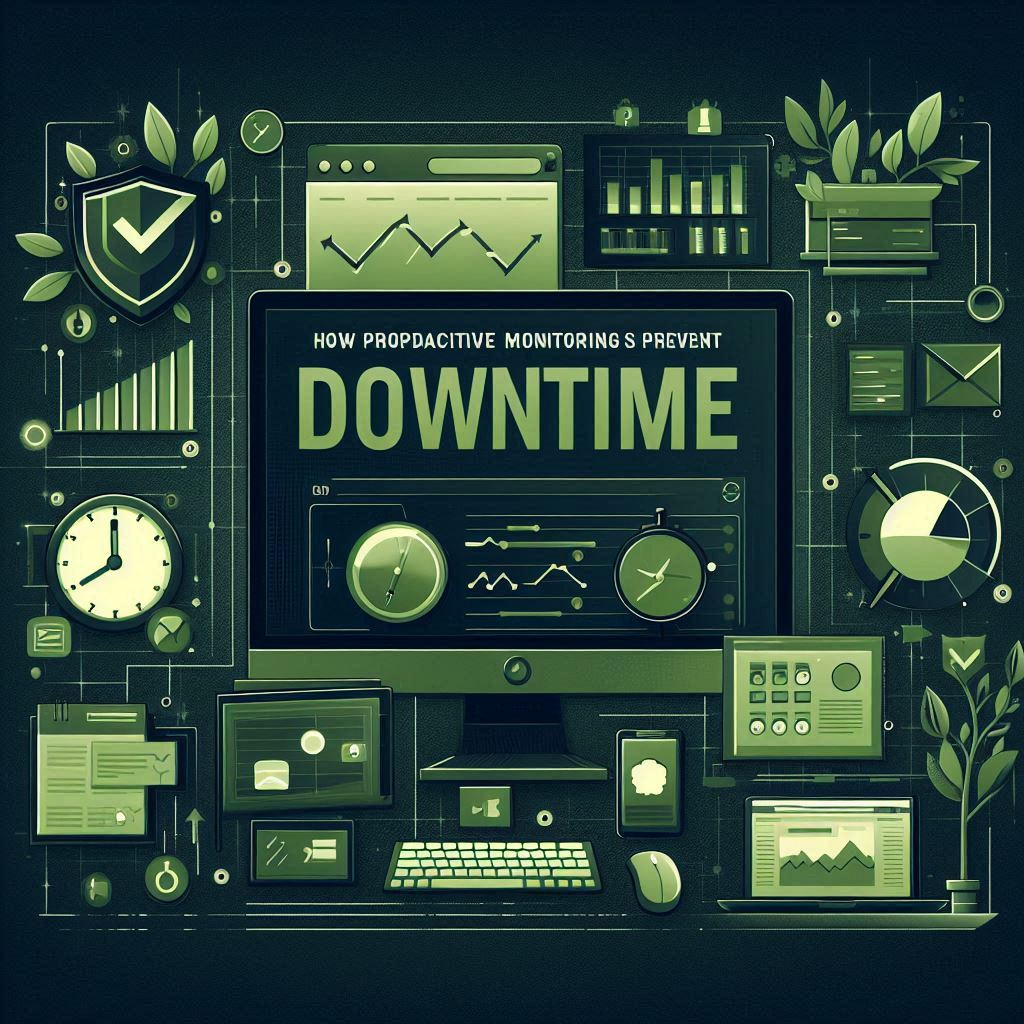
How Proactive Monitoring Can Prevent Downtime
13/06/2024
How Proactive Monitoring Can Prevent Downtime
In a digital world where continuous website availability is crucial for business success, preventing downtime is a top priority. Proactive monitoring of websites and servers plays a vital role in this process. By adopting a proactive approach, companies can identify and resolve issues before they cause significant disruptions. In this article, we will explore how proactive monitoring can prevent downtime and ensure business continuity.
What is Proactive Monitoring?
Proactive monitoring is the practice of continuously observing and analyzing IT systems to detect and resolve potential issues before they affect end users. Unlike reactive monitoring, which responds to problems after they occur, proactive monitoring aims to anticipate and prevent failures.
Benefits of Proactive Monitoring
Adopting proactive monitoring offers several important benefits for businesses:
- Downtime Prevention: Identifying potential problems before they cause downtime allows for early corrective action.
- Improved User Experience: Keeping the site available and functional enhances user satisfaction and trust.
- Cost Reduction: Resolving issues proactively can be more economical than dealing with the consequences of a total system failure.
- Increased Reliability: Proactively monitored systems tend to be more reliable, which is crucial for business continuity.
How to Implement Proactive Monitoring
Implementing an effective proactive monitoring system involves several key steps:
1. Defining Metrics and Performance Indicators
To monitor proactively, it is essential to define the metrics and performance indicators to be tracked. This includes CPU usage, memory, database performance, application response time, and network integrity. Establishing thresholds for these indicators will help identify when something is out of the ordinary.
2. Appropriate Monitoring Tools
Choosing the right tools is crucial for the success of proactive monitoring. Tools like StatusServer, Nagios, Zabbix, Prometheus, and Datadog offer advanced monitoring and alert functionalities. These tools can monitor various aspects of the IT infrastructure and provide real-time data for analysis.
3. Configuring Proactive Alerts
Setting up alerts to notify the IT team about potential issues is a fundamental part of proactive monitoring. Alerts should be configured for various conditions, such as excessive resource usage, connectivity failures, and performance degradation. Notifications can be sent via email, SMS, or messaging apps.
4. Continuous Analysis and Reporting
Proactive monitoring doesn't end with alert configuration. It's important to continuously analyze the collected data and generate reports to identify trends and patterns. This can help predict future issues and take preventive measures. Log analysis and performance reporting tools are essential in this process.
5. Preventive Maintenance
Preventive maintenance is an essential practice in proactive monitoring. This includes regular software updates, security patches, and hardware integrity checks. Conducting preventive maintenance regularly can prevent problems before they cause critical failures.
Use Cases for Proactive Monitoring
Various industries and sectors can benefit from proactive monitoring. Some examples include:
- E-Commerce: Ensuring the e-commerce platform is always available to maximize sales and revenue.
- Financial Services: Monitoring critical systems to avoid disruptions in financial transactions.
- Healthcare: Maintaining the availability of IT systems to ensure the continuity of patient care.
- Education: Ensuring online learning platforms are always accessible for students and teachers.
Conclusion
Proactive monitoring is an essential strategy to prevent downtime and ensure business continuity. By identifying and resolving issues before they affect end users, companies can keep their systems running efficiently and reliably. Implementing proactive monitoring practices, such as defining metrics, choosing appropriate tools, configuring alerts, continuous analysis, and preventive maintenance, is crucial for any organization that relies on its IT infrastructure.


